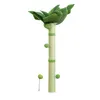“Discover the fascinating world of wild duck breeds in our comprehensive article. Learn about their unique physical characteristics, behavior patterns, habitat preferences, and feeding habits. Find out why people choose to raise wild ducks, whether it’s for conservation efforts, backyard farming, hunting, or ornamental purposes. We also provide essential tips on caring for and maintaining wild ducks, including shelter, feeding, watering, predator prevention, and general maintenance. Whether you’re a seasoned farmer or simply a duck enthusiast, this article has everything you need to know about raising wild ducks.”





Overview of Wild Duck Breeds:
Mallards are one of the most common wild duck breeds found in North America. They have a distinctive green head, yellow bill, and brown body. Mallards are known for their adaptability and can be found in a variety of habitats, including wetlands, forests, and urban areas. They are omnivores and eat a diet of insects, plants, and small animals.
Pintails are another popular wild duck breed. These ducks are recognized by their long, slender necks and pointed tails. Pintails prefer to live in open water environments such as marshes, lakes, and rivers. They primarily eat plant matter, but also consume insects and small crustaceans.
Wood ducks are easily recognizable due to their vibrant coloring. These ducks have a striking combination of colors on their heads, wings, and bodies, making them one of the most beautiful wild duck breeds. Wood ducks are typically found in wooded areas near rivers, streams, and swamps. Their diet consists of insects, plants, and small aquatic animals.
Teal ducks are smaller in size compared to other wild duck breeds, but are still highly sought after by hunters due to their speed and agility. These ducks have a distinctive green stripe on their wings and a small, compact body. Teal ducks prefer shallow water habitats such as marshes and ponds. They are primarily herbivores, feeding on aquatic plants and seeds.
Finally, Canvasbacks are another popular wild duck breed known for their unique appearance. These ducks have a long, sloping bill and a reddish-brown head. Canvasbacks prefer large bodies of open water and feed mostly on aquatic plants.
Reasons to Raise Wild Ducks:
Conservation Efforts:
One of the primary reasons people choose to raise wild ducks is for conservation efforts. Wild ducks are an essential part of our ecosystem and play a crucial role in maintaining the balance of nature. However, due to habitat loss and other factors, many species of wild ducks are facing extinction. By raising wild ducks, individuals can contribute to conservation efforts by providing them with a safe and natural environment to thrive.
Backyard Farming:
Raising wild ducks can also be a lucrative business venture for those interested in backyard farming. Ducks are a rich source of protein and are ideal for producing products such as eggs, meat, and feathers. Moreover, they are relatively easy to care for and require minimal resources. Therefore, raising wild ducks can be an efficient way to produce food while also enjoying the beauty of nature.
Hunting:
For some individuals, raising wild ducks is a means of preparing for hunting season. By raising them from a young age, hunters can train the ducks to become comfortable around humans and less fearful of loud noises. This makes them easier to hunt during the hunting season, and it also provides an opportunity for individuals to enjoy the thrill of hunting without having to harm wild animals.
Ornamental Purposes:
Finally, many people choose to raise wild ducks for ornamental purposes. Their striking colors and unique patterns make them a popular choice for adding a touch of nature to gardens and ponds. Additionally, their docile nature makes them great pets, and they can provide hours of entertainment with their playful personalities.
Care and Maintenance of Wild Ducks:
Shelter
The first essential factor in raising wild ducks is providing them with adequate shelter. Wild ducks need a safe place to roost, preferably somewhere that protects them from extreme weather conditions and keeps them safe from predators. A duck house can be a great option for domesticated ducks that live in a backyard, but for wild ducks, a natural shelter like shrubs or tall grasses can provide cover. However, it’s essential to ensure that the area is free from toxic plants that could harm the ducks.
Feeding and Watering
Ducks require a diet that is rich in protein, vitamins, and minerals to ensure optimal health. Feeding wild ducks can be done by placing food in water bodies like a lake or pond. However, it’s crucial to avoid feeding them bread or other human food that may cause digestive problems. Instead, feed them corn, oats, rice, seeds, or insects, which are part of their natural diet.
Additionally, clean, fresh water should be readily available at all times. Ducks use water to bathe, swim, and drink, so it’s crucial to ensure that the water source is clean and deep enough for them to submerge their entire body. A shallow drinking bowl would also be useful.
Predator Protection
Wild ducks are vulnerable to predators like foxes, raccoons, and coyotes, making it essential to safeguard them against these attackers. An excellent way to protect them is by fencing off the duck pen and placing chicken wire over the top to prevent aerial attacks. Additionally, creating barriers around the pond to reduce access by predators is necessary. It’s also essential to remove any carcasses or leftover food to minimize the attraction of predators.
General Maintenance Tips
Regular maintenance of the duck area is essential to ensure the ducks’ health and safety. Cleaning the area regularly is essential to keep it sanitary and minimize disease outbreaks. Removing debris from the water source and replacing the straw bedding in the duck house helps maintain cleanliness and hygiene.
In conclusion, raising wild ducks requires care and attention to ensure their survival and well-being. Providing adequate shelter, feeding and watering them properly, protecting them from predators, and regular maintenance are essential factors in raising healthy and happy wild ducks. By following these tips, you can create a conducive environment for your wild ducks to thrive and grow.
FAQ
Q1. What are the most popular wild duck breeds?
Wild ducks are fascinating creatures with a vast array of different breeds, each with their unique characteristics and traits. Some of the most popular wild duck breeds include the Mallard, Wood Duck, Pintail, Wigeon, and Teal. These breeds are commonly found in North America and are often hunted for sport or food.
Q2. What is the difference between wild ducks and domesticated ducks?
Wild ducks are naturally occurring species that have not been bred for human consumption or other purposes. Domesticated ducks, on the other hand, have been selectively bred by humans for specific traits such as higher meat or egg production. Wild ducks are generally smaller in size than domesticated ducks and have a leaner body shape. They also have stronger instincts, which allow them to survive in the wild.
Q3. How do wild ducks contribute to the ecosystem?
Wild ducks are an integral part of the ecosystem, they play a vital role in maintaining a healthy balance within aquatic ecosystems. They help to control the population of insects, snails, and other aquatic organisms that can cause harm to the environment. Additionally, wild ducks serve as an important food source for predators such as foxes and eagles.
Q4. Where can you observe wild duck breeds in their natural habitat?
The best place to observe wild duck breeds is in their natural habitat, which is typically found near water sources such as lakes, ponds, and rivers. National parks and wildlife reserves are great places to observe wild ducks, along with wetlands and marshes. Some urban areas may have local parks or ponds where wild ducks can be observed as well. It’s important to remember to keep a safe distance from the ducks to avoid disrupting their natural behavior and habitat.

